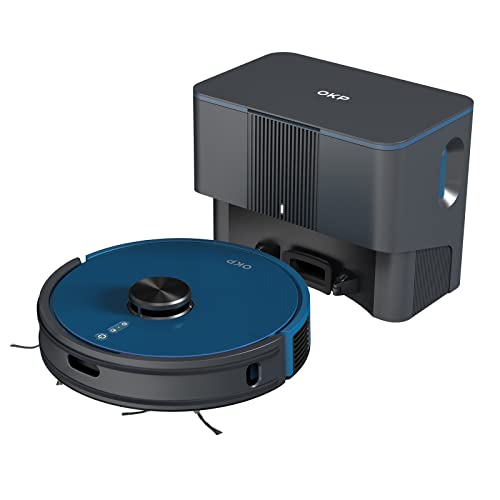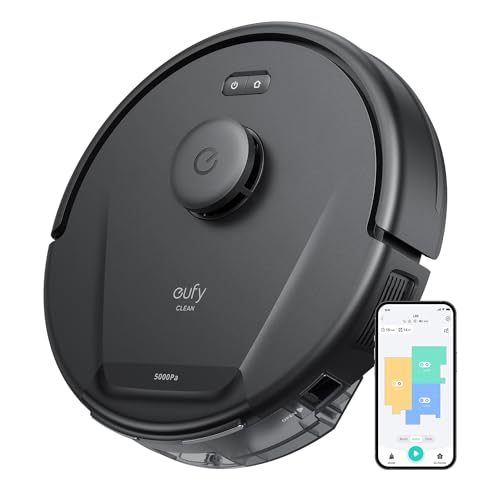The Most Hilarious Complaints We've Heard About Vacuum Lidar
페이지 정보

본문
A wide range of technologies are used in robot vacuums to make maps and prevent them from bumping into obstacles while cleaning. Lidar is often considered to be the best lidar robot vacuum option.
 Other sensors, like cameras and gyroscopes, can do a decent job but can be slower and more expensive than Lidar. Let's look at vacuum lidar to see if the extra cost is really worth it.
Other sensors, like cameras and gyroscopes, can do a decent job but can be slower and more expensive than Lidar. Let's look at vacuum lidar to see if the extra cost is really worth it.Object Detection
Lidar, unlike cameras, sends laser beams which bounce off surfaces and then return to the sensor. The sensor is able to determine the distance and depth of the area by measuring the time it takes for the laser to return. The sensor is able to create an 3D model of the surrounding.
Lidar sensors are more precise than other types robot vacuum sensors such as gyroscopes and vision-based systems. A robot equipped with a lidar can detect objects smaller than the human hand, which makes it ideal for use in tight spaces. Lidar provides a more accurate view of the surroundings that allows robots to navigate and avoid obstacles.
A robotic vacuum uses the information it gathers to create an interactive map of your house, which it then makes use of to navigate through cleaning. This enables the robot to efficiently clean every inch of your space, minimizing missed or repeated areas. The ECOVACS HOME app also lets you set virtual boundaries on the map, which can aid your robot in avoiding furniture or other obstacles.
The latest robotic vacuums can detect various objects like large furniture and clutter. They can even distinguish between pet hair and dirt which is particularly helpful for pet owners who shed. This can help reduce the amount of dust you'll need to remove after a cleaning session, reducing waste and saving you time.
One disadvantage of the technology is that it isn't as effective at finding smaller obstacles like cables and wires. Small objects can be taken into the vacuum and cause damage. This is why it's important to be vigilant about ensuring that your appliances aren't connected to power outlets near your robot vacuum.
Researchers from the National University of Singapore (NUS) and the University of Maryland have published research on the topic. The paper is titled "Spying with your robot Vacuum cleaner: Eavesdropping Through Lidar Sensors". The principal researcher, Sriram Sami was joined by Yimin Dai and Sean Rui Xiang Tan. Nirupam roy also contributed.
Obstacle Avoidance
Many robot vacuums have obstacle sensors to help them avoid hitting furniture or other objects. These sensors make use of infrared light reflected off of objects to identify them and direct the robot away from the object. They are a fundamental part of the majority of robot vacuums, however some models also utilize other navigation technology to better comprehend their surroundings. Some models use 3D Time of Flight to send out light pulsations and to measure the time it takes them to return. This assists the vacuum in understanding dimensions, height and depth of obstacles.
Another method that robotic vacuums use to navigate is SLAM. This method makes use of cameras and sensors in order to create a map of a room. Using this data the vacuum can determine its location and then plan an appropriate route to clean the room. Certain robovacs that include SLAM are able to complete a home in one pass instead of multiple and saves time and energy.
Some robovacs have cliff sensors that are specifically designed to prevent the robot from falling off ledges, stairs or other ledges. These sensors detect infrared light reflected from stairs and other surfaces. This information is sent to the vacuum. When the sensor receives an alert that it detects, it triggers the vac to alter its direction to avoid the ledge, preventing the vac from falling down the stairs and becoming stuck inside.
A more Advanced lidar robot vacuums method of avoiding obstacles is by using multi-zone time of flight (ToF) to analyze the surrounding area and create a map of space. This technology is similar in nature to LiDAR used by self-driving vehicles to sense their environment. Some robovacs with this technology can scan and detect objects in real-time, which is helpful for large structures or obstacles positioned in unusual places.
Some robovacs with 3D ToF can also be equipped with a camera for visual detection of obstacles. This could be useful if the sensors are blocked by furniture or other obstacles. Certain robovacs come with binocular vision which lets them see the room surrounding them in 3D. This makes it easier to navigate and clean up the entire space in a single pass.
Real-Time Mapping
In contrast to other sensors, which depend on physical contact with obstacles to detect them, lidar technology can detect objects even when they do not emit any light. This is done by measuring the time it takes for a laser to hit an object and then return to the sensor. The information is analyzed in order to create an 3D map that is accurate. This technology is used in a wide range of industries, including aerospace and self-driving vehicles. It also makes robotic vacuums more effective in navigating and avoiding obstacles, reducing the need to constantly monitor them.
A top-quality robot with lidar, such as the ECOVACS DEEBOT, can easily navigate through your entire home due to its sophisticated mapping system. This device, with its TrueMapping technology and AIVI 3D, can scan the area and avoid obstacles in real-time to provide a more efficient cleaning experience. It can also design efficient routes to ensure that all areas are cleaned of the room, without repeating the same locations. In addition, it can identify the position of the charging station to reduce battery and power usage.
Other robots perform this task by using different techniques, like gyroscopes or SLAM (Simultaneous Location and Mapping). These methods are not as precise as lidar, and they do have some drawbacks. For example, gyroscopes can be susceptible to errors caused by uneven flooring or complex home layouts. Additionally they require a constant source of light to work, which can be costly in the event that you need to charge the battery frequently.
LiDAR can detect and avoid obstacles and obstacles, which is a game changer when it comes to home automation. This technology is now available on robotic vacuums that are more affordable. LiDAR allows cleaners to effortlessly maneuver around delicate items like crystal vases, avoid snags in chair legs, and cross low thresholds.
It can also scan your entire house and create a digital map that is interactive. This enables the vacuum to keep track of and adjust to the arrangement of your rooms, which will prevent the same areas from being cleaned and reduce the use of batteries. It also can recognize its charger's location and return to it when completed.
Safety
lidar navigation sensors (light detection and range) are utilized in a variety of robotic devices, from autonomous vehicles to robot vacuums. These systems emit laser beams, and detect variations in reflected lights from objects with different shapes and densities, and then transform those signals into information that the device can interpret. Hackers may be employing them to monitor your home. They're still essential to navigate and avoid obstacles.
A group of researchers led by Assistant Professor Nirupam Roy at the National University of Singapore recently published a paper on "Spying with your Robot Vacuum Cleaner: Eavesdropping via Lidar Sensors." In their study, they demonstrated how they could manipulate the household vacuum's Lidar system, which is usually used for navigation and mapping, to function as a microphone that records audio without affecting the robot's navigation. The trick is to take advantage of the fact that sound waves can cause objects to vibrate. This can cause small changes in the laser sensor's reflected signal. Hackers can recognize and analyze the signal, then transform the information into audio files using the same technology used in laser microphones that have been employed for espionage since the 1940s.
A laser sensor can recognize small objects, but it cannot distinguish between a crystal vases and dust piles or a solid wall a doorway. A smart vacuum that uses lidar and cameras to map the environment is more precise. A good example is the ECOVACS Dreame F9, which features 14 infrared sensors, including 8 that are used for object detection and collision detection. This allows the robots to cross low thresholds with ease and move around the vase with care and avoid spotting dust that may be under your couch.
In addition to making your home cleaning more efficient Vacuum lidar can also help protect furniture and other household items from damage. Choose a model with collision detection and prevention features that prevent it from colliding with or scraping against furniture such as a bumper sensor or soft cushioned edges. It is also recommended to purchase an item that is furniture-friendly, which means it is able to safely cross low thresholds and avoid stairs, as well as navigate around large pieces furniture without causing any damage.

- 이전글Getting The Best Https://dl.highstakesweeps.com/ 24.09.02
- 다음글Bitcoin - So Simple Even Your Youngsters Can Do It 24.09.02
댓글목록
등록된 댓글이 없습니다.


 블로그체험단 바로가기
블로그체험단 바로가기